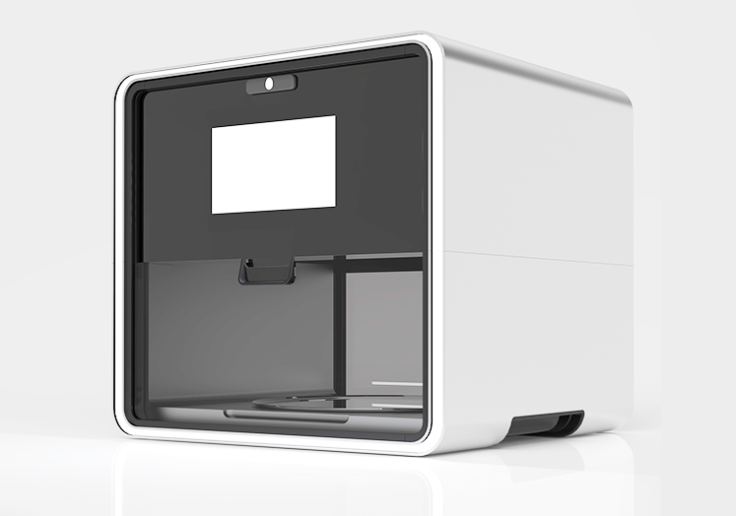Coming Soon To Your Kitchen Countertop: A 3D Personal Chef

Hobbyist tinkers are already making all kinds of plastic oddities using desktop three-dimensional printers, but it seems the next application of 3D technology will be to shape and create new foods. The science isn't quite as advanced as the "Star Trek" replicator, but it's heading in that direction.
Instead of melting plastic filament, 3D food printers use fresh ingredients that can be shaped into any number of edible arrangements as they're squeezed out of stainless steel cartridges into whatever food item the user calls for. The culinary device capturing attention lately is Foodini, by a company called Natural Machines. It was unveiled this week at Dublin's Web Summit.
"It's the same technology," said Lynette Kucsma, co-founder of Natural Machines, to CNN. "But with plastics there's just one melting point, whereas with food it's different temperatures, consistencies and textures. Also, gravity works a little bit against us, as food doesn't hold the shape as well as plastic.... In essence, this is a mini food-manufacturing plant shrunk down to the size of an oven."
With a relatively accessible retail price of $1,000, the Foodini is aimed at the typical consumer who doesn't have the time or skill to prepare his or her own food. While the cartridges need to be loaded with fresh ingredients and the printing process does take some time, the automated nature of the device means users can be off doing something else entirely while the robochef prints up, say, a ravioli. Upon completion, the food must be cooked per usual (which may be a big downside for consumers expecting a fully prepared, four-course meal from a machine).
A social bank of online recipes will see users sharing their own instructions for creating all kinds of culinary items with the device. This is accessible via the Foodini's touchscreen, making food preparation about as mindlessly easy as it can be. Once you've got the cartridges loaded with the appropriate foodstuffs, not only can you piggyback on someone else's recipe, but your food robot will handle the preparation entirely.
This isn't totally new technology, but it represents the first attempt to market 3D food printing at the consumer level. Food printers have already found applications in commercial care of the elderly, who often have very specific dietary needs or medical difficulties that prevent them from chewing and swallowing regularly shaped food. Food printers such as those by Germany's Biozoon can shape food into whatever form factor it needs to be.
Even though this is the same foodstuff you're already eating all the time, Kucsma addresses potential concerns from skeptics. "Take the microwave oven, for example. In the '70s, people were a bit fearful about it. They thought food could be poisoned with radiation or something, but fast forward 30 years, and there's one in every household," she said. "This is real food, with real fresh ingredients; it's just prepared using a new technology."
High-tech is coming to the kitchen in other ways, as well. IBM has programmed its Watson artificial intelligence machine to build new recipes by analyzing the flavor compounds in foods that pair well. Foodie site BonAppétit.com has a section featuring a number of recipes designed by Watson.
© Copyright IBTimes 2025. All rights reserved.






















